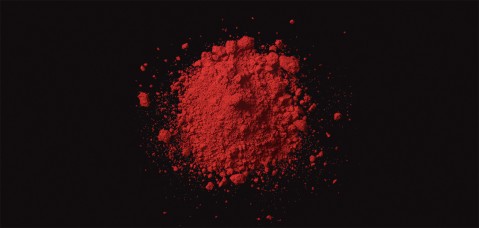The annual Hiscox/Royal Institution debate on the conservation of contemporary art
If a piece of contemporary art wasn't made to last, should it be replaced if it degrades? Can you remake a 1960s Fluxus hotdog long after the original frankfurter has shrivelled away; restore one of Gary Webb's perspex pieces drained of colour by sun damage; or restock a Damien Hirst medicine cabinet where the medicinal contents have long since exceeded their sell-by date? This was just one of the contemporary art conundrums posed to a panel debate at the Royal Institution this week which argued that there is a real challenge in conserving contemporary art particularly when much of it is intended to be ephemeral and 'of its time'.
According to one of the debate's panellists, Sir Christopher Frayling, Professor Emeritus of Cultural History at the RCA, "The whole point is that it [certain pieces of contemporary art] wasn't made to last." A view endorsed by the debate's chair - broadcaster, journalist and author Mark Lawson who added, "If it was intended to disappear ...then it should be allowed to disappear."
One solution of course would be to encourage contemporary artists to think more carefully about the materials they use but should an artist be forced to think like that? "If artists were worried about posterity all the time," added Frayling, "they will make very dull art."
Conservation is a difficult proposition
The nature of contemporary art is that much of it is made using materials that will quickly degrade which can make conservation a difficult proposition. And restoration can be equally challenging. "[Art] Restorers have done more damage to art in this country than the Luftwaffe," claimed Robert Hiscox, Honorary President of Hiscox, and himself an avid collector of contemporary art.
There are solutions however, not least in the conservator's skill in preserving art. "We can manage the decay so a lot of people can see the artwork," said Sandra Smith, Head of Conservation at London's V&A Museum. And if the worst should happen the beauty of contemporary art is that many of the artists who have made a piece that needs some form of restoration are still alive and can be persuaded to help remake a degraded piece. Although experience in this area was mixed. Hiscox argued that, "If an artist is sympathetic, they'll make you another one," while art dealer Kenny Schachter said he found it easier to deal with work from deceased artists, given that 80% of living artists he’d asked to restore a degraded work had said no.
Artist Gary Webb countered that while an artist could be willing to remake a piece the initial moment might have gone, "The feeling of when you make the work originally...the feeling is so raw, there's a change, a connection you've missed [when you try to remake it]."
Fakery also troubled the panel and the risks of buying contemporary art on an ‘as seen basis’. Do you have any comeback, like buying a car, if the piece does not arrive as advertised? Ignorance is bliss according to Schachter who maintained that, “A fake painting is like a fake orgasm. If you don’t know it’s a fake, then everyone is happy.”
Given many of these issues and the challenges that contemporary art poses when it comes to preserving it for posterity, back to the point of the debate; do we care? "Paint, poo, metal, straw, plastic, chocolate, pickled frogs, gold, diamonds" Tweeted @slinkissimo (Assistant Editor at RA Magazine) as the debate drew to a close. Whatever the medium used, it's clear there is more than sixty years' worth of post-war contemporary art that should be looked after if it's to tell the same stories of our time that a Michelangelo or a Raphael might tell us from the Renaissance. And yes, judging by the great turn out at the debate, many of us do care.
See #hiscoxart for more commentary and reaction from the debate.




